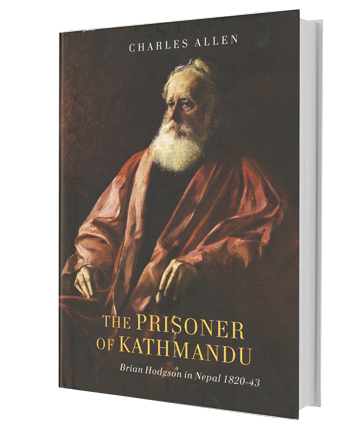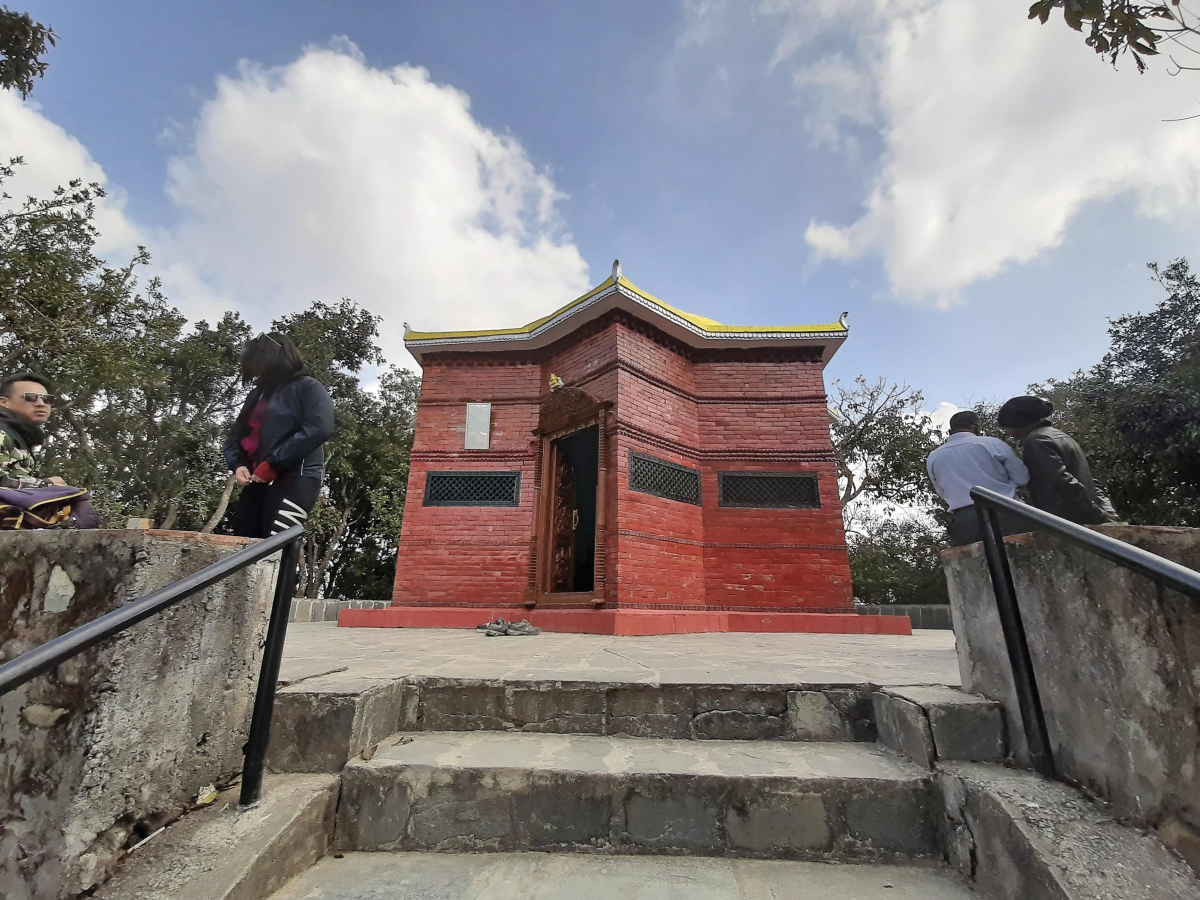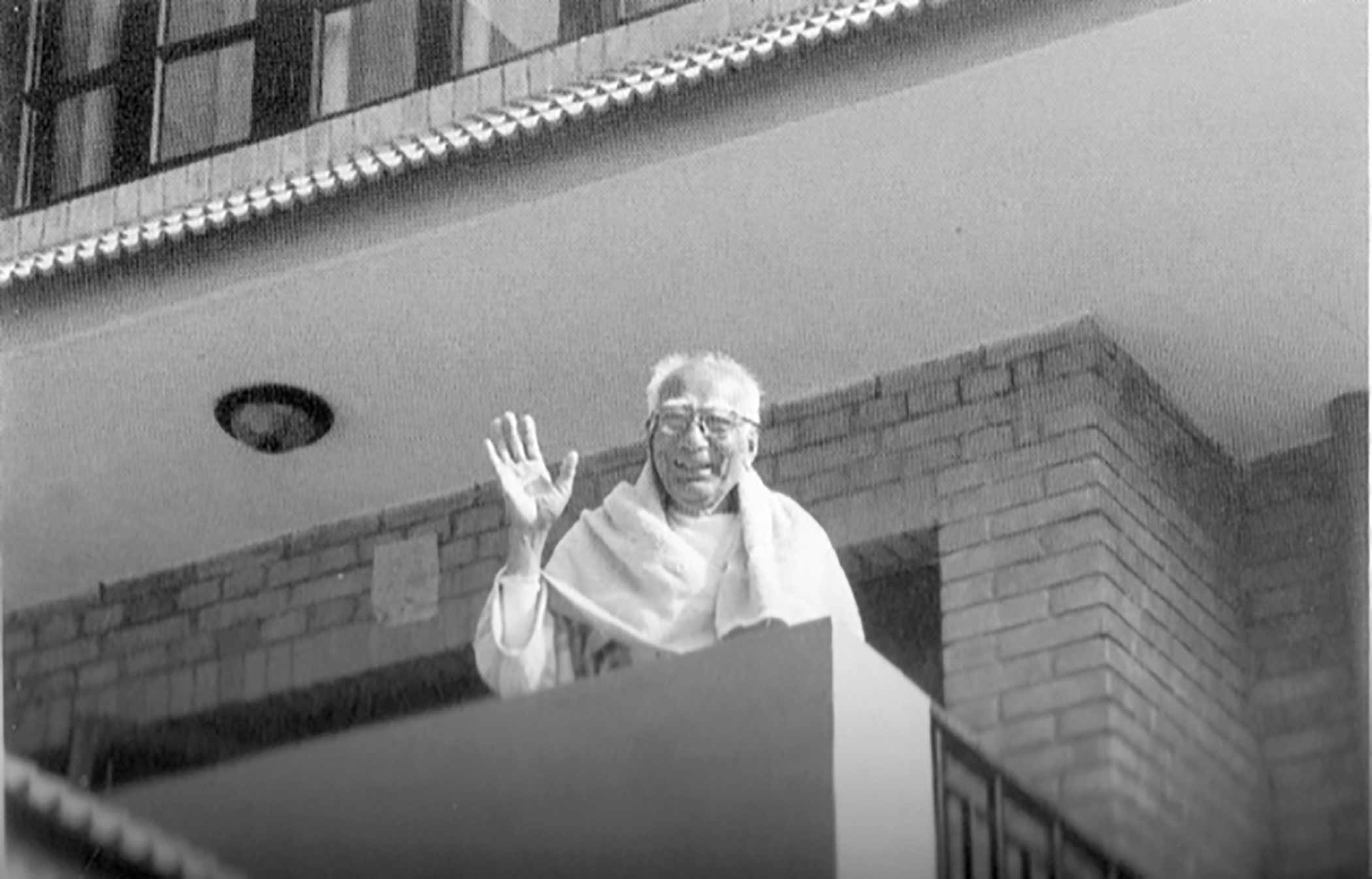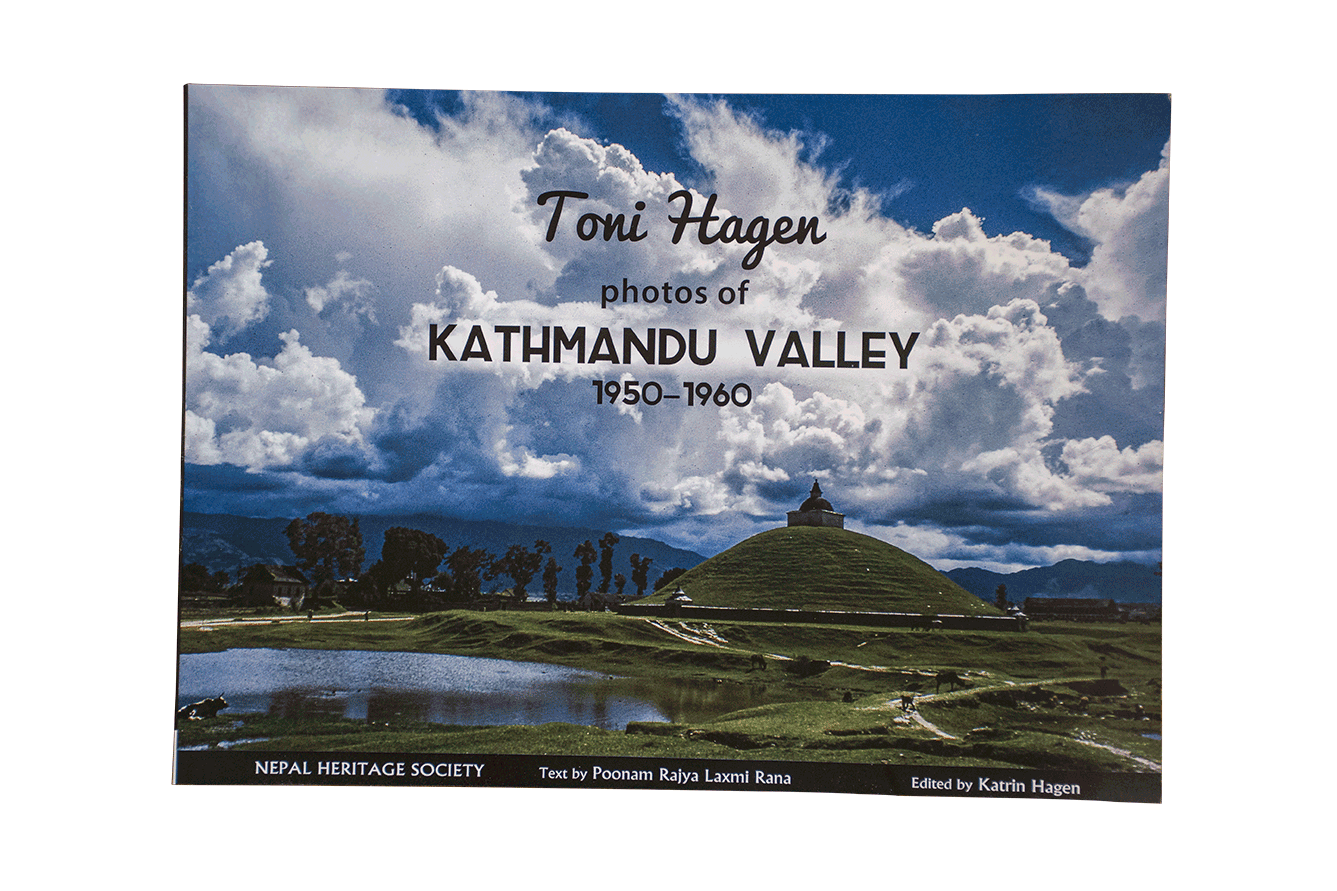I imagine him striding north along Jalapahar Ridge towards Darjeeling’s Observatory Hill. He is fifty-seven, which is old by British Indian standards. He would look then pretty much as he does in a photograph taken soon after his final return to England, now part of a collection of his papers and drawings in the Natural History Museum of London. There is something of the peppery Indian Army colonel on half-pay about him: trim and dapper, moustachioed and bewhiskered, his right hand thrust into his coat a la Bonaparte. He has the air of someone who does not suffer fools gladly, a little uneasy, on the defensive.
~ Charles Allen, in his Foreword to The Prisoner of Kathmandu, picturing his subject as a bit lost after being forced out of the British Residency in Nepal and into a sort of lonely exile in Darjeeling
The man was Brian Hodgson. By profession, Hodgson (1801-1894) had been “a member of the Bengal Civil Service and a servant of the Honourable East India Company (HEICo), [and] by inclination a devotee of Orientalism, but Orientalism in the true meaning of that word, which is the study of Oriental languages, literature and culture.” According to Allen, Hodgson has sometimes been called ‘The Hermit of the Himalayas’ and ‘The Father of Himalayan Studies’, and though neither are entirely accurate, they present one with images of who he was and what he did.
 The year was 1858. Allen’s image of Hodgson strolling through Darjeeling is from 14 years after he had left Kathmandu. Hodgson was about to depart the Himalayas for England, but not for ‘Home’ “as in the Anglo-Indian sense of the word, with a capital H.” If anywhere was ‘Home’ for him, it was Kathmandu, where he had served as a colonial civil servant for 23 years (1820-43), first as Assistant Resident, then Acting, then full British Resident to the Kingdom of Nepal. Those were Hodgson’s “glory years,” as Allen puts it. It was when and where he had influenced (and kept the British government informed of) political affairs surrounding the royal court of Nepal, and when and where he conducted detailed scientific studies in almost every aspect of the cultural and natural sciences of the Himalayas.
The year was 1858. Allen’s image of Hodgson strolling through Darjeeling is from 14 years after he had left Kathmandu. Hodgson was about to depart the Himalayas for England, but not for ‘Home’ “as in the Anglo-Indian sense of the word, with a capital H.” If anywhere was ‘Home’ for him, it was Kathmandu, where he had served as a colonial civil servant for 23 years (1820-43), first as Assistant Resident, then Acting, then full British Resident to the Kingdom of Nepal. Those were Hodgson’s “glory years,” as Allen puts it. It was when and where he had influenced (and kept the British government informed of) political affairs surrounding the royal court of Nepal, and when and where he conducted detailed scientific studies in almost every aspect of the cultural and natural sciences of the Himalayas.
It was also there, in Kathmandu, that he had married a local Muslim woman, his ‘begam’, whom he called Meharunnisha (from Mehr-un-nissa, meaning the ‘Sun among Women’), and by whom he had a family. By all accounts they had two children, a son and a daughter, although there is some evidence that he may have left a second daughter, an infant, behind. Sadly, for Hodgson, his son Henry died young, at age 21, and his daughter Sarah at 15. Their mother was also left behind.
Allen’s book alludes to Hodgson (and his staff) as being virtual ‘prisoners’ of Kathmandu, primarily because the royal government kept track of their every move, and restricted them to the confines of the Valley of Nepal except when traveling to and from India. The business of the British Residency in Kathmandu was largely with Nepalese jurisprudence, trade, and militarism, strongly affected by political intrigues and machinations of the royal court, often involving rival factions (the Thapas, Pandes, and Basnyats), their allies and their enemies. Late in Hodgson’s assignment, those intrigues were building up to the infamous Kot Massacre, which put Jung Bahadur (Kunwar) Rana into the nation’s driving seat as the all-powerful Prime Minister. But, alas, the Kot Parva, as it was called, occurred in 1846, three years after Hodgson had left Nepal.
Much of what Hodgson experienced and influenced while serving as British Resident to Nepal is documented in the history of the time, and is accessible to historians. One of the values of Allen’s biographical study is the many day-to-day details of that time in his life that he brings to light.
It was Hodgson’s passion for documenting the zoology, botany, anthropology, and linguistics of the Himalayas that has earned him a strong following among social and natural scientists who are amazed, to this day, at the many early advances in natural history that he made. His interests also included Nepalese religions, especially Buddhism, which he pursued with the able assistance of “a quite exceptional informant: an elderly Buddhist scholar [named] Amritananda,” a ‘Vajra Acharya’ tantric master who had a significant impact on Hodgson, both personally and professionally.
For many of his scientific studies Hodgson relied on individuals employed to bring him specimens and knowledge from well beyond the Valley. He also employed gifted assistants, including a noted Chitrakar, artist, to help document and record the various collections that are at the base of his legacy. Such was the scale of the artistic production, “that impressive collections of Hodgsonian drawings and paintings survive in five major institutions in England and France. Of these, the most spectacular are the two sets of paintings, each made up of six large albums of ornithological drawings and notes and of mammals, insects and reptiles that form the basis of the Hodgson Collections at the Natural History Museum and the Zoological Society of London. Hitherto inaccessible to all but serious scholars, both sets are now in the process of being digitized, prior to making them available to view on the Internet” for generations of scholars to come.
This biographical study of Hodgson in Kathmandu from 1820 and 1843 includes descriptions of some of the tense times in Nepal’s resistance to the British colonial regime. But, as Allen points out, Hodgson’s “policy of firm but active diplomacy” helped defuse the antagonisms, harassments, and blatant militarism that arose during the reign of King Rajendra and his courtiers against the Resident and his staff and broader British interests in India.
‘The Prisoner of Kathmandu’ is a biographical tour de force, a detailed and insightful addition to the limited information on Hodgson’s life and legacy. Two earlier books about Hodgson also informed Allen’s book, and remain as major sources on his life and legacy. They are the 1896 biography, ‘Life of Brian Houghton Hodgson’ by W.W. Hunter, and the 2004 ‘Origins of Himalayan Studies: Brian Houghton Hodgson in Nepal and Darjeeling 1829-1858’ by David Waterhouse and contributors. For many readers and researchers using Allen’s book, however, the lack of a detailed index and a proper bibliography (beyond the endnotes), is puzzling and troublesome. Nonetheless, ‘The Prisoner of Kathmandu’ is a very welcome and commendable contribution to Hodgsonian studies for students, scholars, and other readers.
‘The Prisoner of Kathmandu’ by Charles Allen (Haus Publishing Ltd., London, 2025; 320 pages, illustrated. ISBN: 9781910376119). Ask for it at local bookstores. The reviewer is a contributing editor to ECS Nepal magazine (don.editor@gmail.com).









